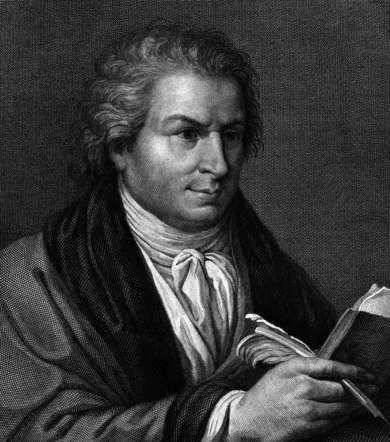Giambattista Bodoni
A book becomes all the more exemplary, the purer the simple beauty of the types in it. It is from out of this beauty – in one word – that the renown of book art speaks, it is in this beauty that it rests.
Giambattista Bodoni, Manuale tipografico, 1818
The seed for Giambattista Bodoni’s interest in books was planted very early on. He was born in 1740 as the son of a printer and began his professional career at the age of 18 in Rome where he worked as a typesetter in the Vatican’s Propaganda Fide printing house. He abandoned plans for a period of study abroad when he was given the reigns of the ducal printing house in Parma. There he managed a prosperous organisation, working for a host of aristocratic clients.
After an invitation to Rome from the Spanish envoy to the Vatican, Bodoni put into effect his plans to open a private printing house and began publishing classic writings in Latin, Greek and Italian. With these works, he established the bold, epic style that made him one of the most famous printers in Europe. In 1798 Bodoni invented the typeface that is today referred to by his name. He explained the principles of his art in his two-volume work Manuale Tipografico, which was completed by his widow after his death and published in 1818.

